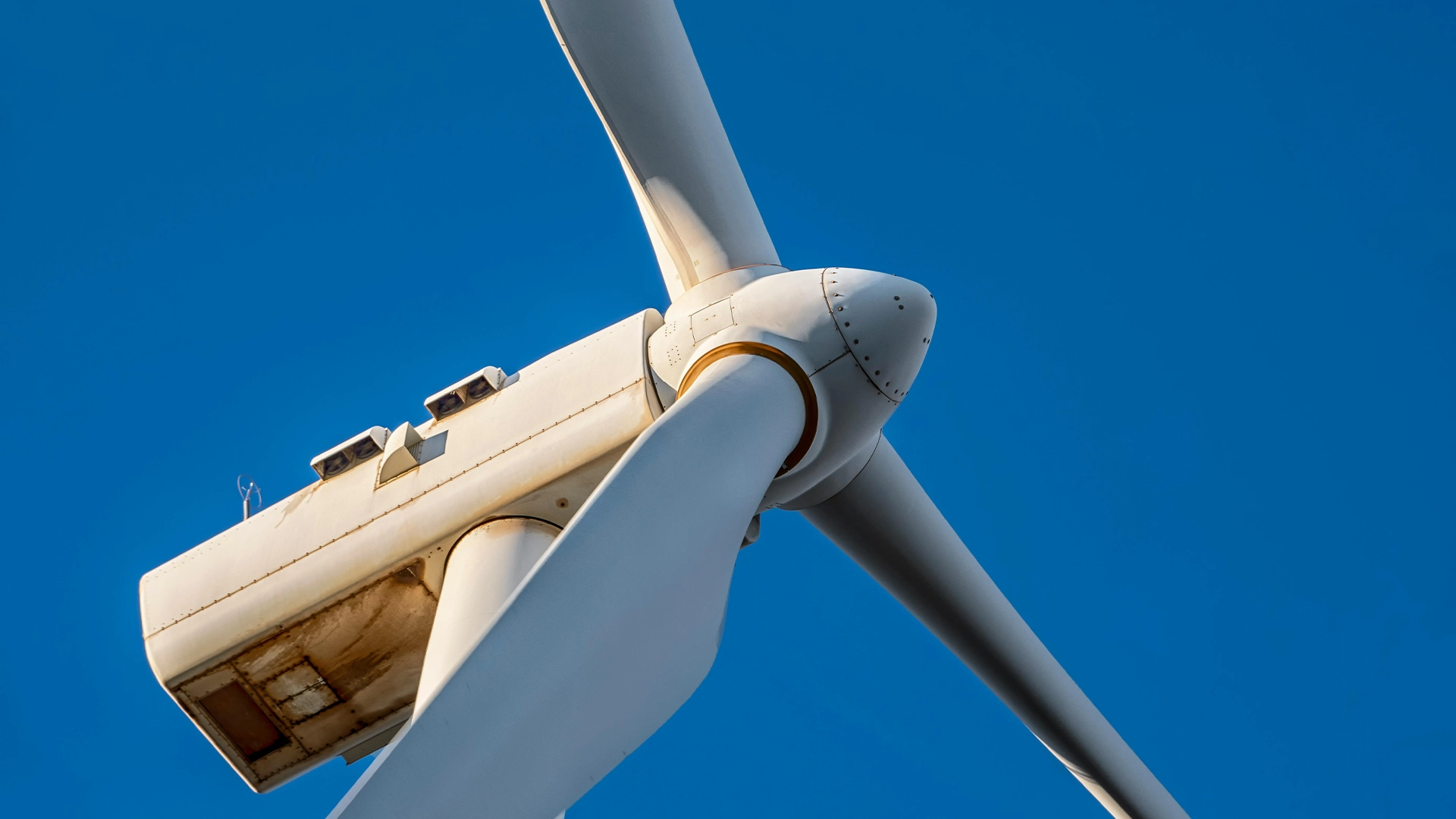Navigating the Complex Terrain of Component Exchange Logistics
When it comes to the Logistics of Main Component Exchange: Crane Operations, Transport, and Site Setup, the stakes are high. Successful operations hinge on meticulous planning and execution, crucial for maximising the efficiency and safety of wind turbine maintenance and upgrades. As O&M Teams and Asset Management Teams, understanding the intricacies of this process is essential for ensuring your projects run smoothly and effectively.
This blog post delves into the critical aspects of Logistics of Main Component Exchange, focusing on crane operations, transport logistics, and site setup. These elements are paramount in the broader context of Wind Turbine Component Exchange, where each phase of the operation must be seamless to prevent costly delays and enhance safety measures.
In this article, we will explore the key logistical challenges you may face, the best practices for crane operations, and how to optimise transport and site setup to ensure a successful component exchange. By understanding these components, you can significantly reduce downtime and improve the overall reliability of your wind assets.
At SBL Solutions, we pride ourselves on our expertise in delivering high-quality logistics solutions tailored to the wind energy sector. Our commitment to safety and continual improvement ensures that you receive the best possible service, empowering your teams to achieve their goals with confidence. If you’re seeking insights or assistance in navigating these logistics, feel free to contact us for more information.
What is Logistics of Main Component Exchange: Crane Operations, Transport, and Site Setup?

The Logistics of Main Component Exchange: Crane Operations, Transport, and Site Setup refers to the systematic coordination and management of all activities involved in the efficient exchange of crucial components in the renewable wind energy sector. This encompasses the use of cranes for lifting and positioning heavy components, the transportation of these parts to and from sites, and the meticulous setup required to ensure safety and efficacy during operations.
At its core, this logistics process involves several key components: the selection and operation of appropriate cranes, the planning and execution of transport routes, and the setup of the site to facilitate safe and effective exchanges. Each component must work seamlessly together; consider it like a well-orchestrated symphony where every instrument plays its part to create harmony. Proper execution of these logistics reduces downtime in wind turbines, ensuring that operations remain efficient and reliable. Without precise coordination, the risk of delays, accidents, and inefficiencies increases significantly.
In the broader context of Wind Turbine Component Exchange, understanding the logistics of crane operations and site setup is vital. It ensures that the exchange of turbine components, such as blades or generators, is completed promptly and safely, thus minimising downtime and maximising operational efficiency. This is where SBL Solutions excels, as our commitment to rigorous safety protocols and comprehensive training allows us to navigate these complex logistics with confidence and precision.
Many may confuse logistics with mere transportation, but it is far more intricate. It involves strategic planning, real-time problem-solving, and an acute awareness of safety regulations and environmental factors. SBL Solutions prioritises these aspects, ensuring our teams are equipped not only with the right skills but also with the right mindset for excellence, ultimately delivering unparalleled service to our clients in the renewable energy sector.
Essential Terms for Understanding Crane Operations and Component Exchange Logistics
To navigate the complexities of Logistics of Main Component Exchange: Crane Operations, Transport, and Site Setup, it’s crucial to familiarise yourself with key terminology. Here are some important terms that will enhance your understanding and effectiveness in this field.
Crane Operation
The process of using cranes to lift, move, and position heavy materials and equipment during construction or maintenance activities. This is vital in ensuring safe and efficient handling of components during the exchange process, particularly in wind turbine installations where precision is key to safety and success in operations. Understanding crane operations helps you anticipate challenges and implement effective strategies for smooth logistics management.
Load Rating
The maximum weight that a crane can safely lift, which is determined by its design and construction. This is critical in Logistics of Main Component Exchange: Crane Operations, Transport, and Site Setup as exceeding load ratings can lead to accidents or equipment failure. Recognising load ratings enables you to choose the appropriate crane for each task, ensuring compliance with safety standards.
Transport Logistics
The planning and execution of moving goods from one location to another, including the coordination of various transportation modes. In the context of component exchange, this involves the seamless transfer of turbine parts from suppliers to installation sites. A sound understanding of transport logistics allows you to optimise routes and reduce delays, which is essential for maintaining project timelines.
Site Setup
The preparation of a location for operational activities, including arranging equipment, establishing safety measures, and ensuring access routes are clear. This plays a significant role in ensuring the efficiency and safety of crane operations during component exchanges. Effective site setup directly impacts the success of logistics operations, minimising downtime and facilitating smooth workflows.
Rigging
The process of designing and implementing a system to lift and move heavy loads safely, often involving the use of slings, shackles, and other hardware. Proper rigging is essential in crane operations to prevent accidents during the lifting of turbine components. Understanding rigging principles allows O&M and asset management teams to execute lifts securely, which is crucial in high-stakes environments like wind turbine installations.
Safety Protocols
Established procedures that ensure the safety of personnel and equipment during operations, particularly in high-risk environments. Adhering to safety protocols is non-negotiable in logistics involving crane operations. Awareness and implementation of these protocols protect your team and assets, promoting a culture of safety that is fundamental to SBL Solutions’ mission.
GWO Training
Global Wind Organisation (GWO) training encompasses a range of safety courses designed specifically for the wind industry, covering critical areas such as working at heights, first aid, and fire awareness. This training is essential for ensuring that all personnel involved in component exchange are adequately prepared for the risks involved. Engaging in GWO training demonstrates a commitment to safety and professionalism, aligning with the values upheld by SBL Solutions.
In conclusion, understanding these terms is essential for anyone involved in the Logistics of Main Component Exchange: Crane Operations, Transport, and Site Setup. By familiarising yourself with this terminology, you can enhance your operational efficiency, improve safety standards, and contribute to the successful execution of complex logistics tasks.
Frequently Asked Questions about Logistics of Main Component Exchange: Crane Operations, Transport, and Site Setup
In this section, we address some of the most common questions regarding the Logistics of Main Component Exchange: Crane Operations, Transport, and Site Setup. Our aim is to provide you with clear and informative answers to enhance your understanding of this crucial area.
When planning crane operations for component exchanges, it is vital to consider factors such as the load capacity of the crane, the height and weight of the components, and the surrounding environment. You should also assess ground conditions and any potential obstacles that could affect the lifting process.
Transport logistics play a significant role in the efficiency of component exchange by determining how quickly and safely components can be moved to and from the site. Effective route planning, vehicle selection, and coordination with transport providers are essential to minimise delays and ensure that components arrive in optimal condition.
Safety measures during site setup include conducting thorough risk assessments, establishing exclusion zones, and ensuring that all personnel are trained in safety protocols. At SBL Solutions, we prioritise a strong safety culture, which involves equipping our team with the necessary training to handle emergencies and maintain a safe working environment.
We ensure that all personnel involved in crane operations undergo comprehensive training, including GWO accredited courses, to equip them with the skills needed for safe and efficient operations. Continuous professional development is also encouraged, allowing our team to stay updated on industry best practices.
Effective communication is crucial in the logistics of component exchange, as it ensures that all team members are aware of their roles and responsibilities. Regular briefings and updates during operations help to coordinate efforts and address any issues promptly, thus maintaining the flow of the project.
At SBL Solutions, we focus on establishing robust processes and protocols that enhance reliability in our logistics operations. This includes regular equipment maintenance, thorough planning of transport routes, and ongoing assessment of site conditions to ensure that every aspect of the exchange runs smoothly.
Certainly! One successful project involved the exchange of wind turbine components, where we meticulously planned the logistics of transport and crane operations. By coordinating closely with our team and the client, we completed the exchange ahead of schedule, demonstrating our commitment to efficiency and safety.
We hope these FAQs have clarified some of your questions regarding the Logistics of Main Component Exchange: Crane Operations, Transport, and Site Setup. If you have any further inquiries, feel free to reach out to us for more information.
Wrapping Up: The Critical Role of Logistics in Crane Operations
In this blog post, we have explored the intricate Logistics of Main Component Exchange: Crane Operations, Transport, and Site Setup. From the meticulous planning required for safe crane operations to the effective transport of vital components and the strategic setup on-site, each element plays a pivotal role in ensuring smooth and efficient operations. With a focus on safety, reliability, and quality, these logistics are essential for the successful exchange of wind turbine components.
Understanding these logistics not only highlights their significance in the broader context of Wind Turbine Component Exchange but also provides you with valuable insights that can enhance your operational strategies. By implementing the best practices discussed, you can mitigate risks and improve efficiency in your projects. Our aim is to equip you with the knowledge needed to make informed decisions that impact your operations positively.
As you consider the information presented, reflect on how you can apply these insights to your own projects. Remember, effective logistics in crane operations is not just about moving components; it’s about fostering a culture of safety and continuous improvement. At SBL Solutions, we pride ourselves on our commitment to excellence, ensuring that you receive the highest standard of service in the industry.
If you have further questions or require assistance, we encourage you to reach out to us. Our team is dedicated to providing you with the support you need in navigating the logistics of main component exchange and beyond. Contact us today through our contact page and let’s work together to enhance your operations.

